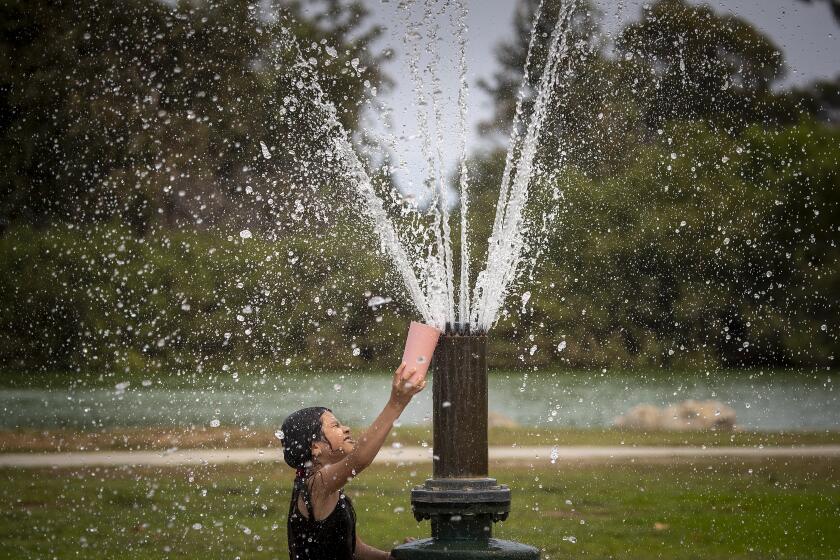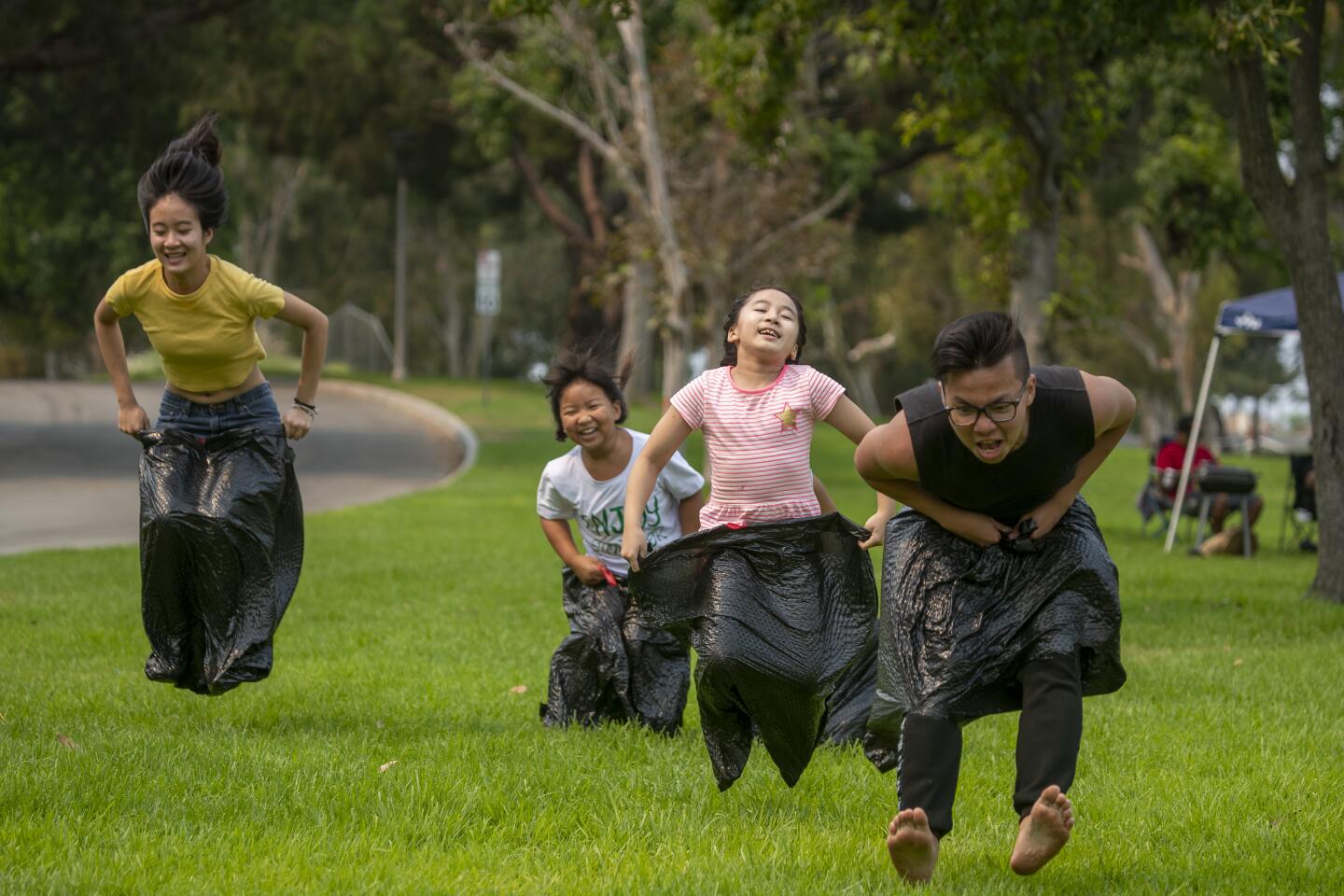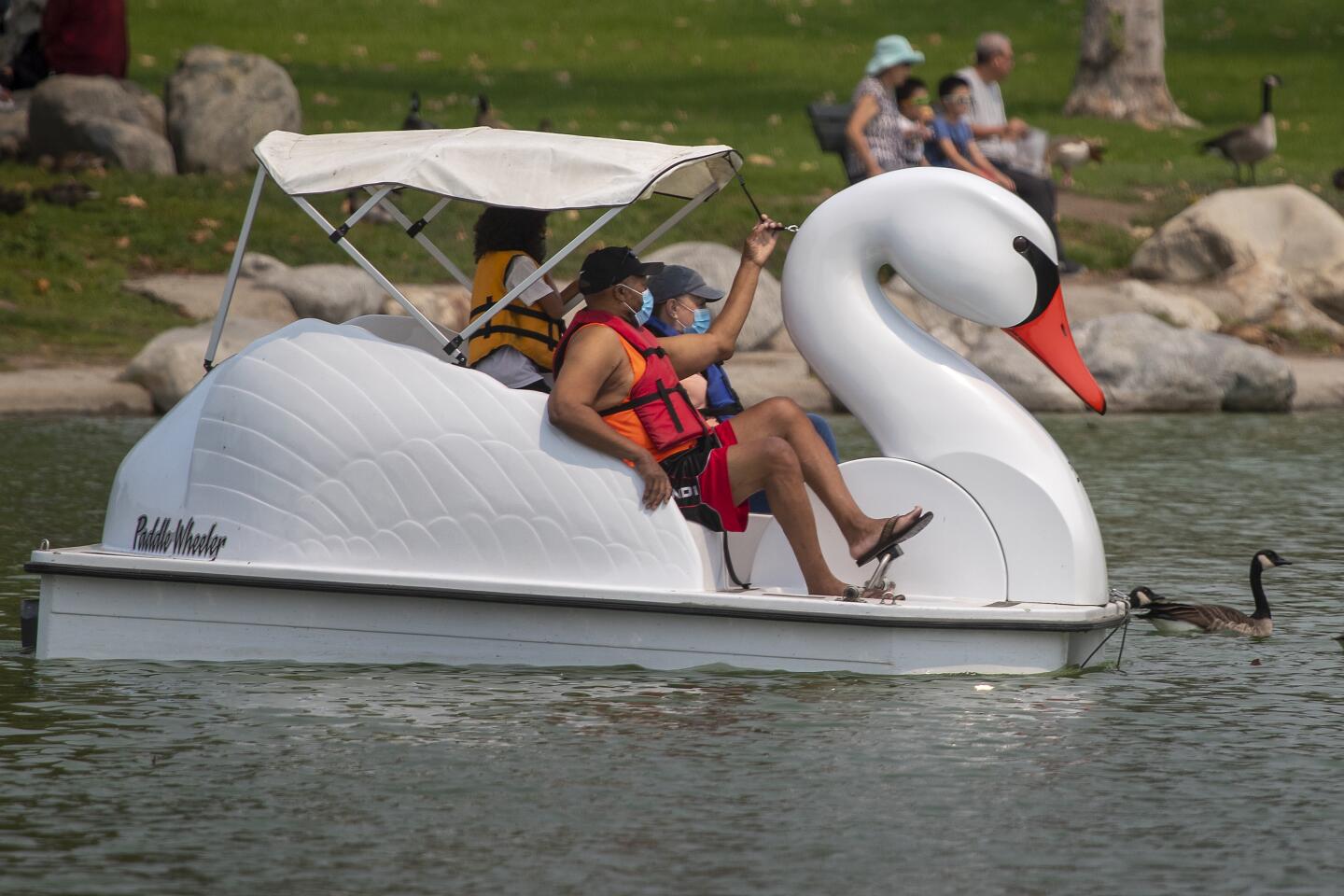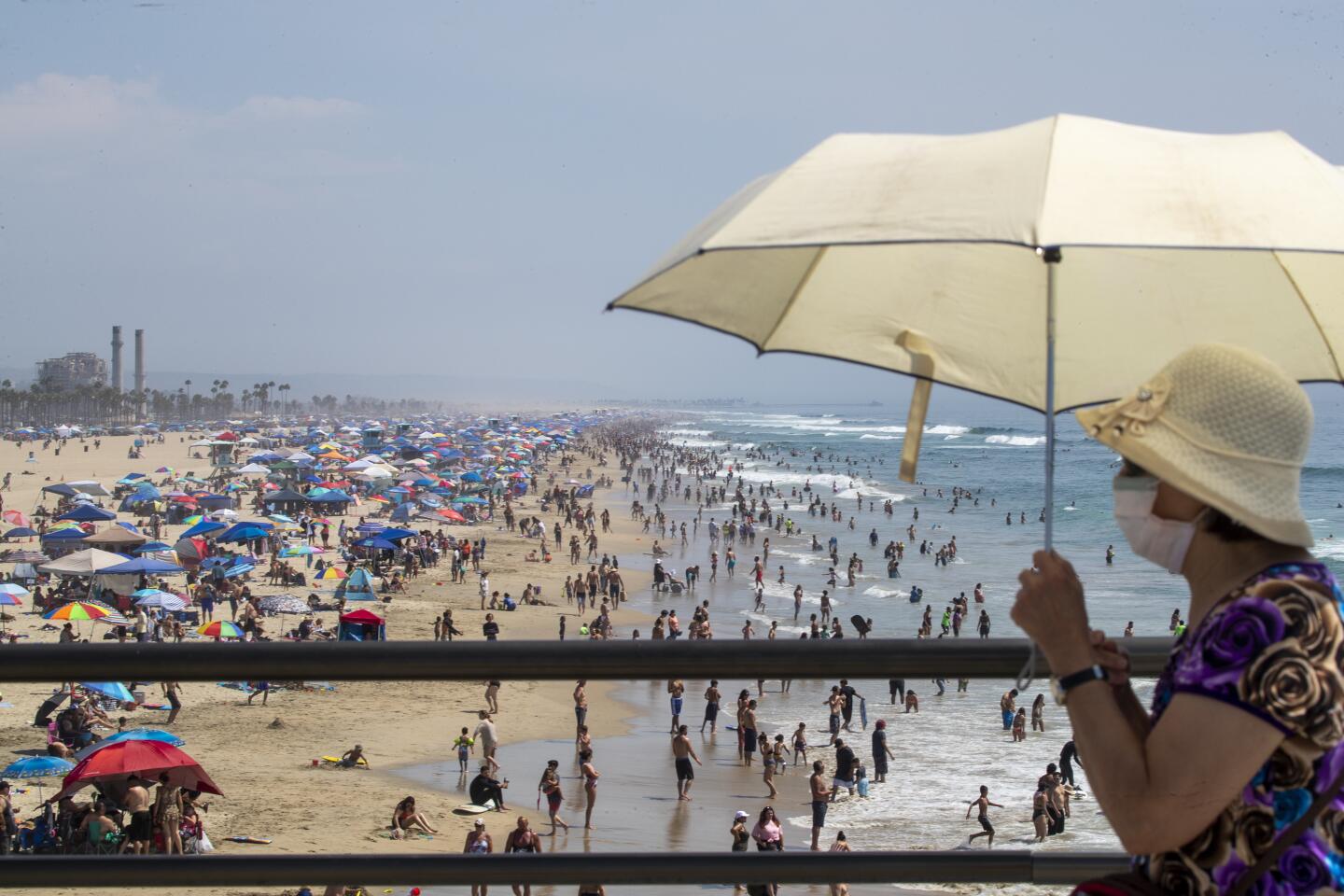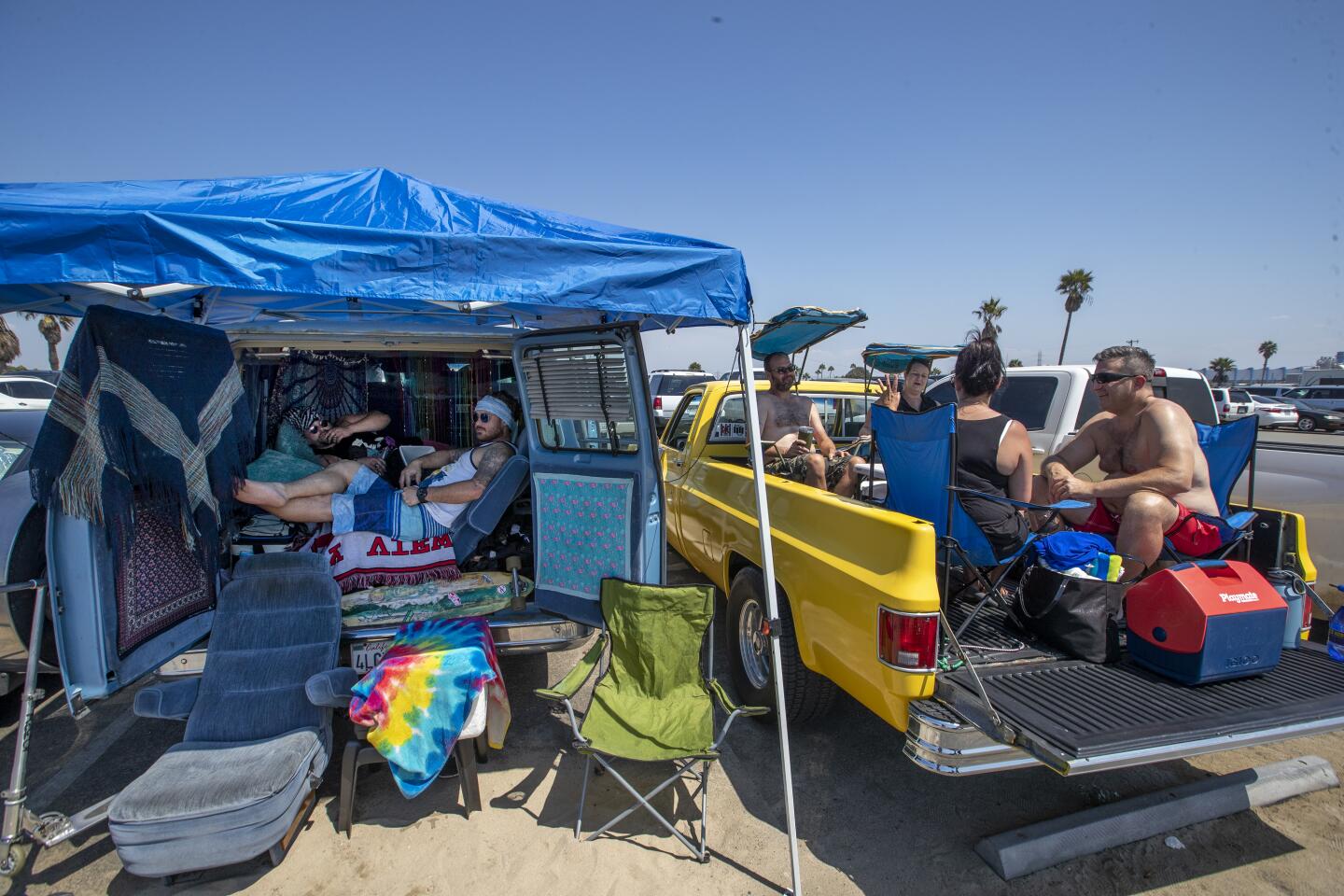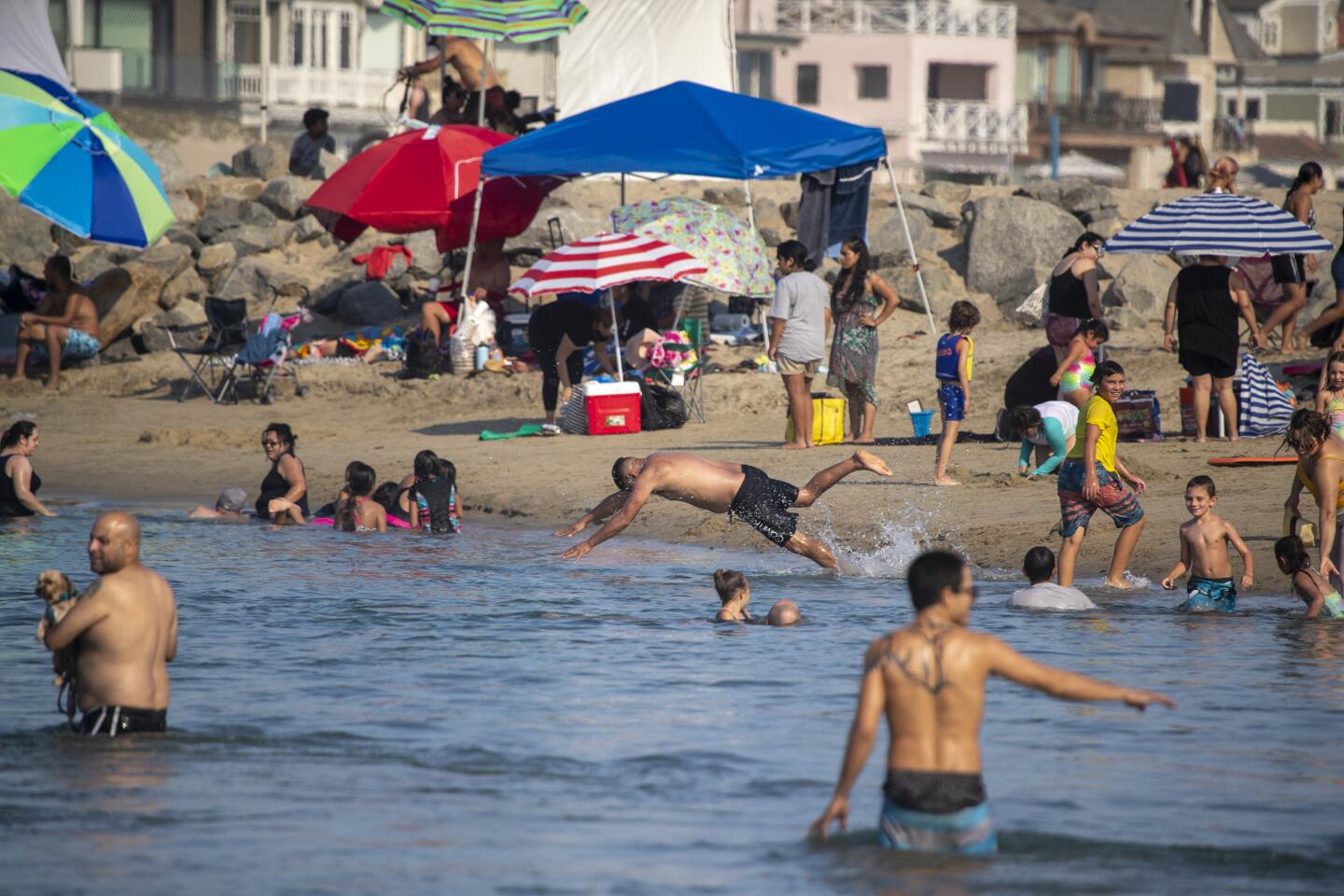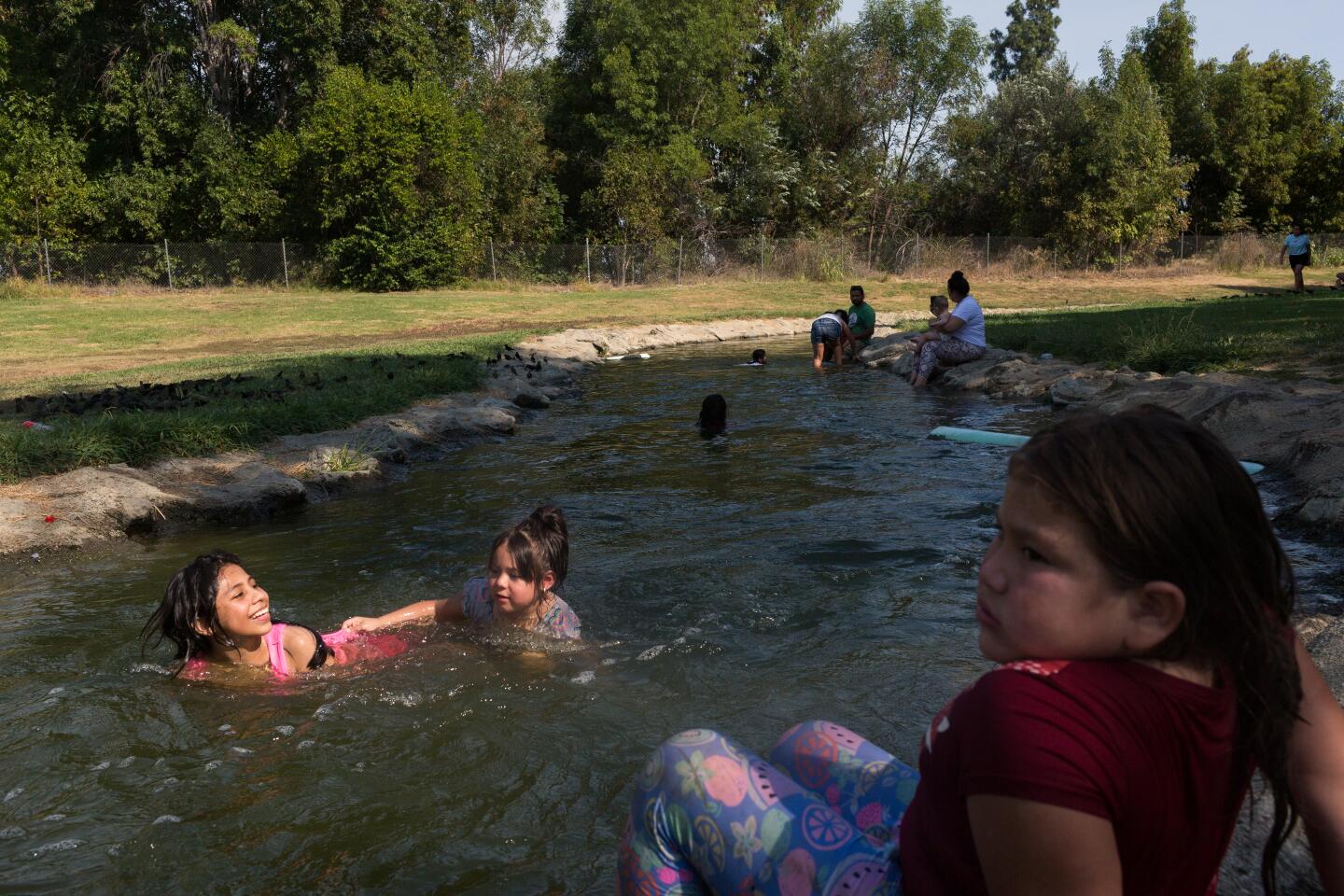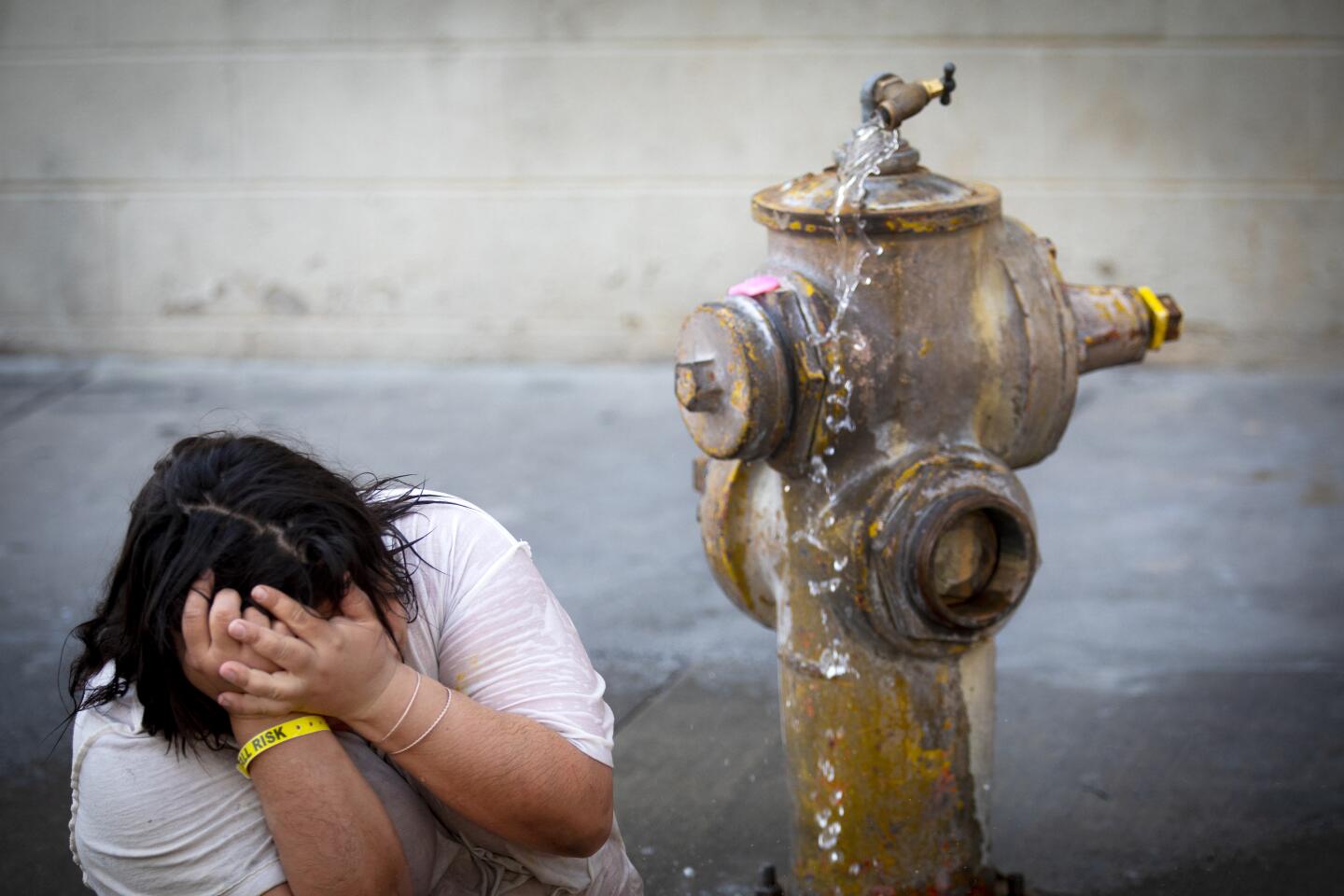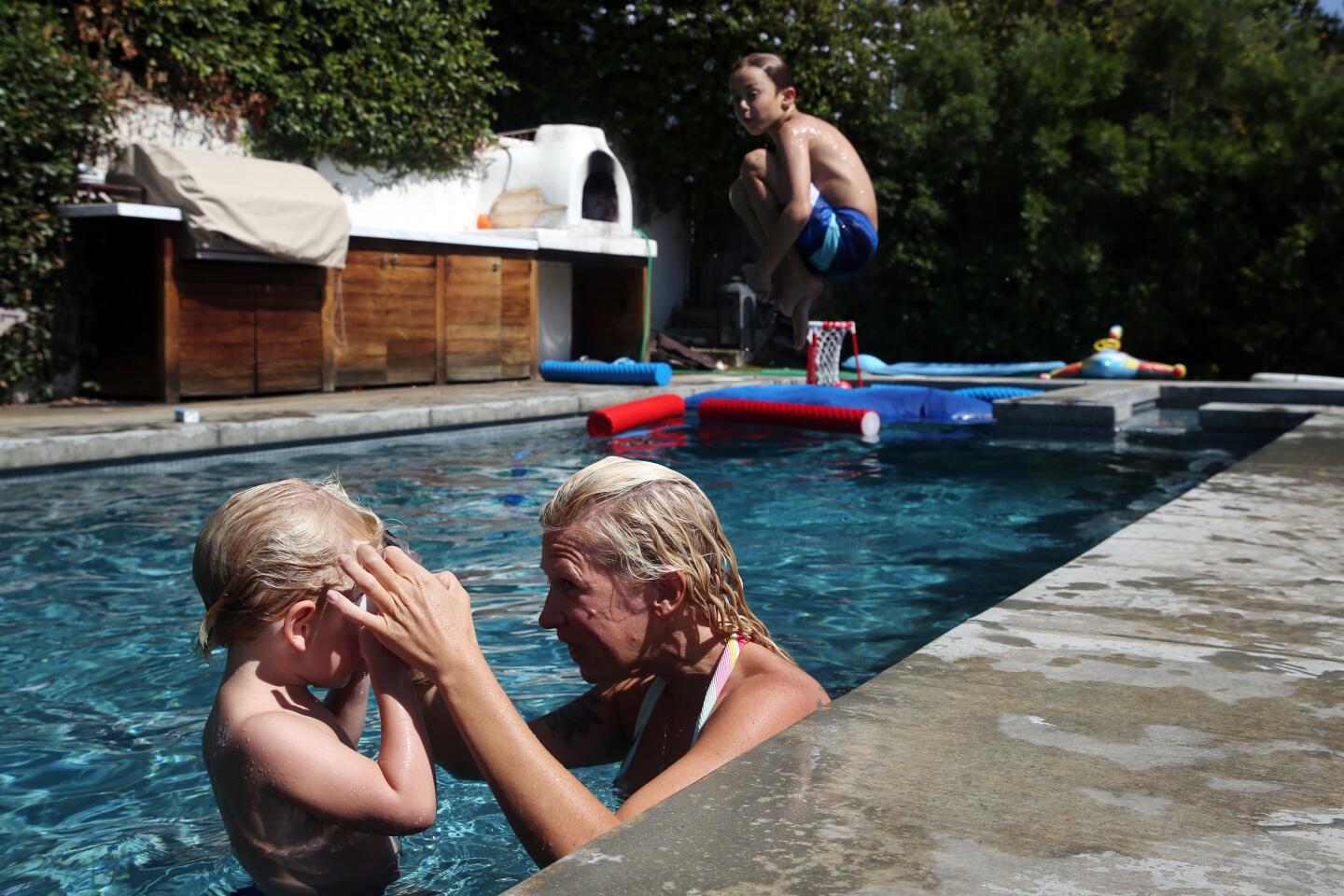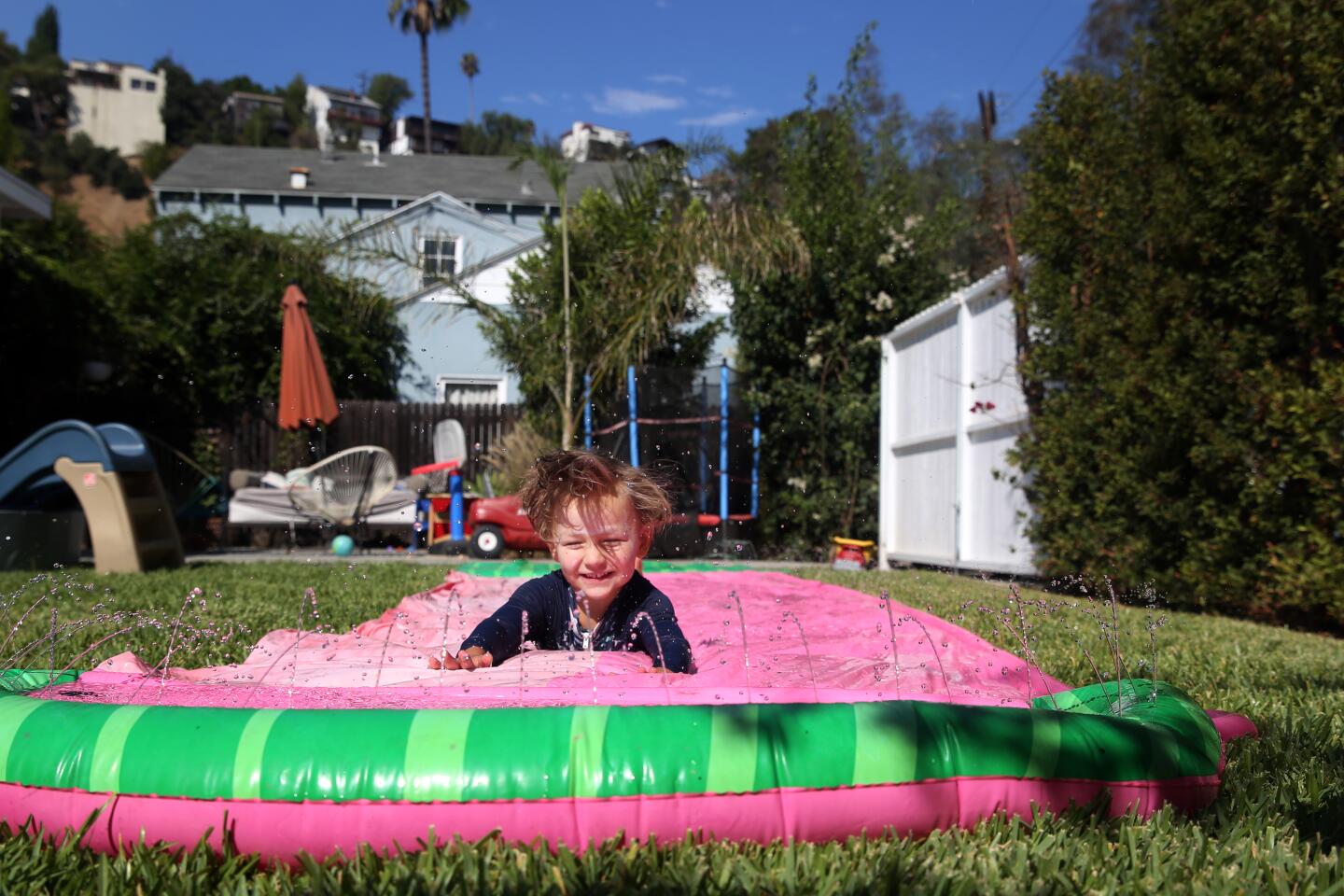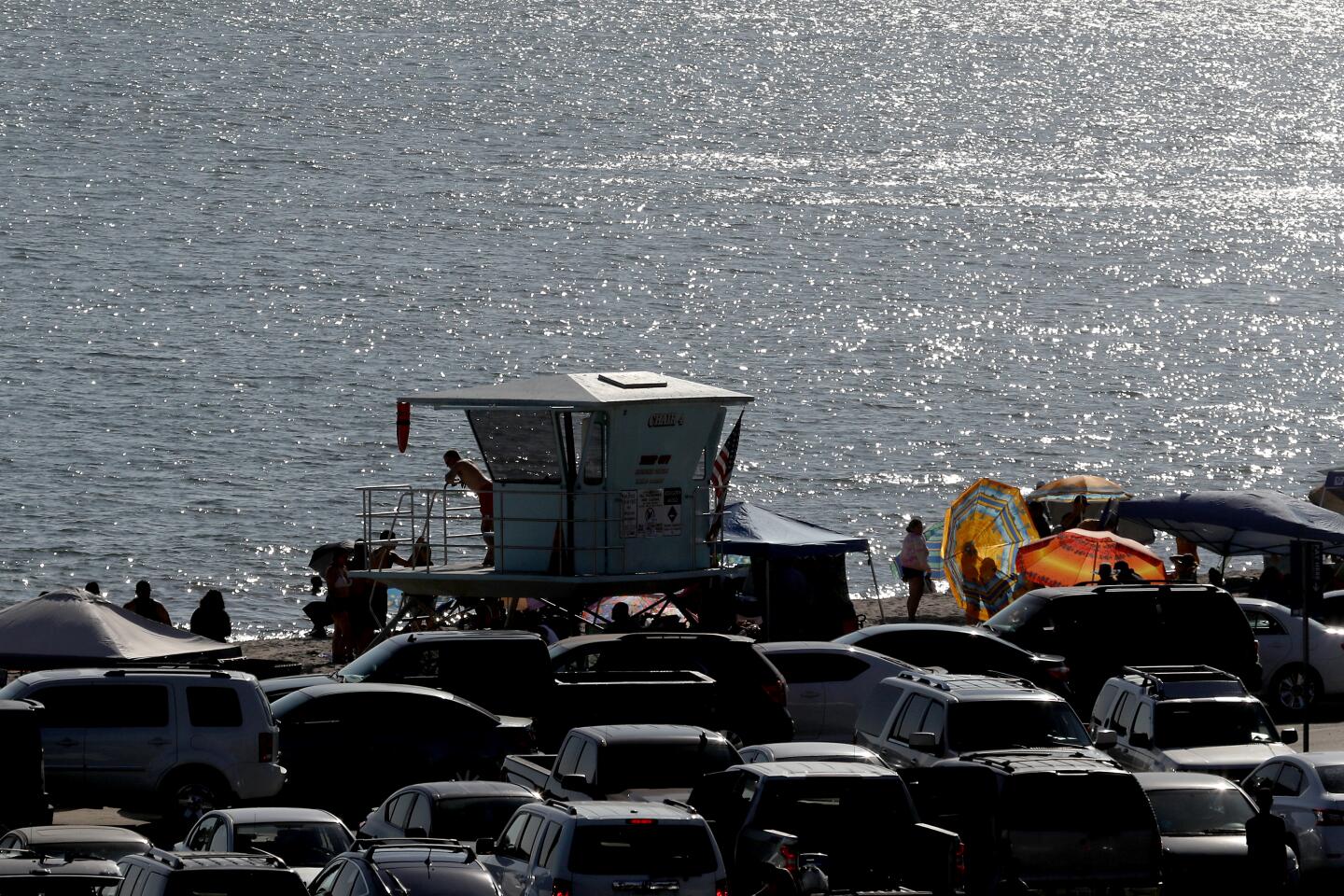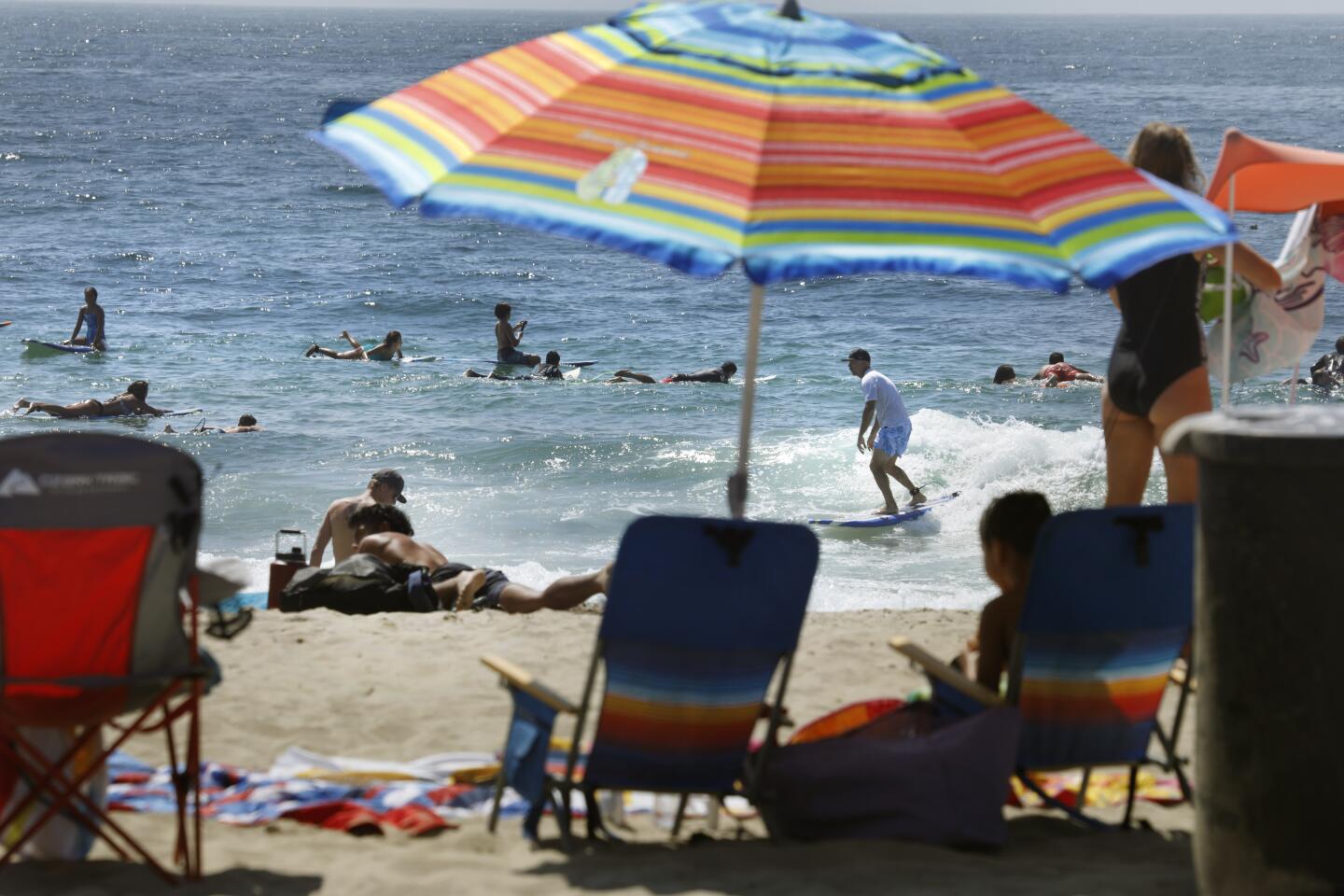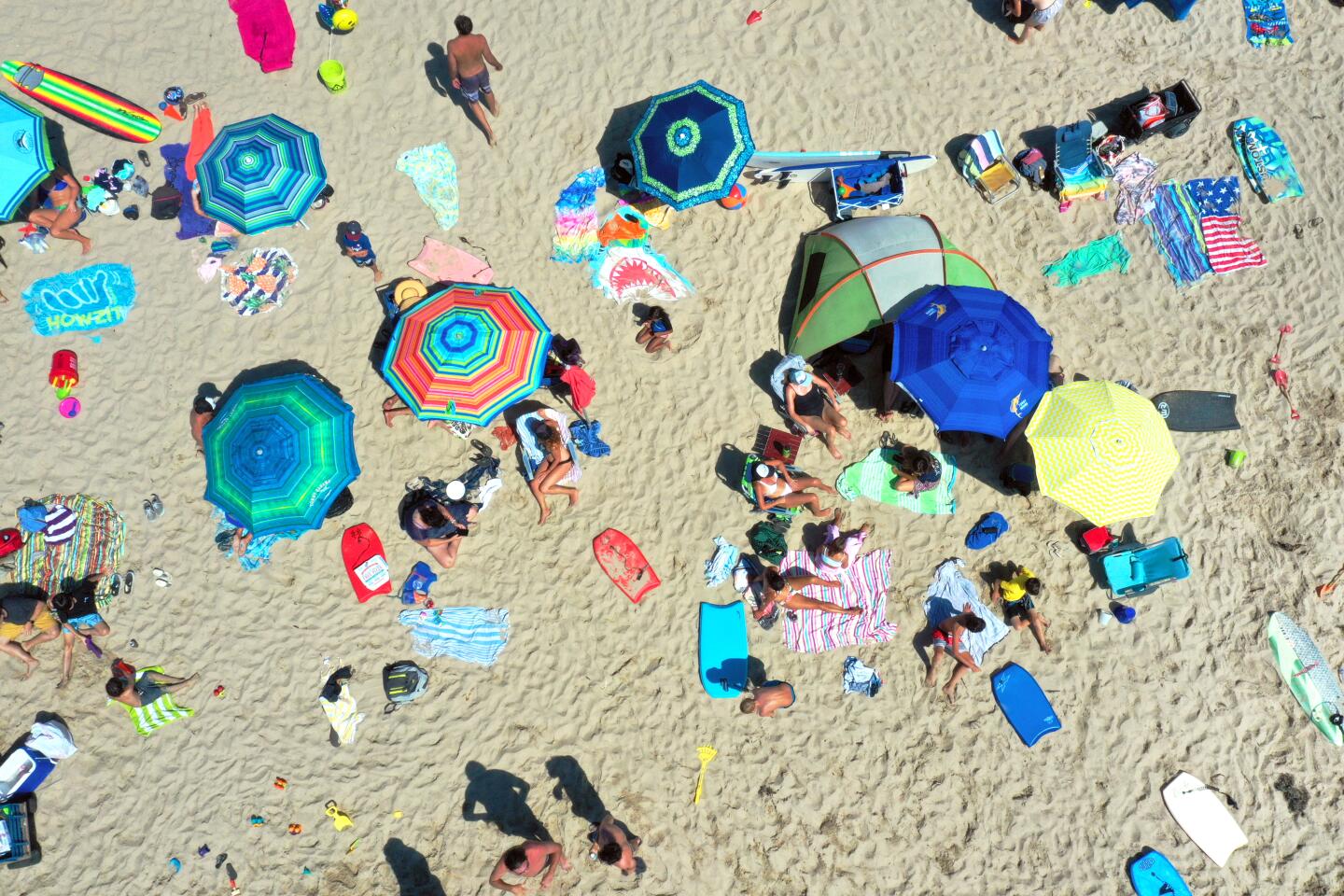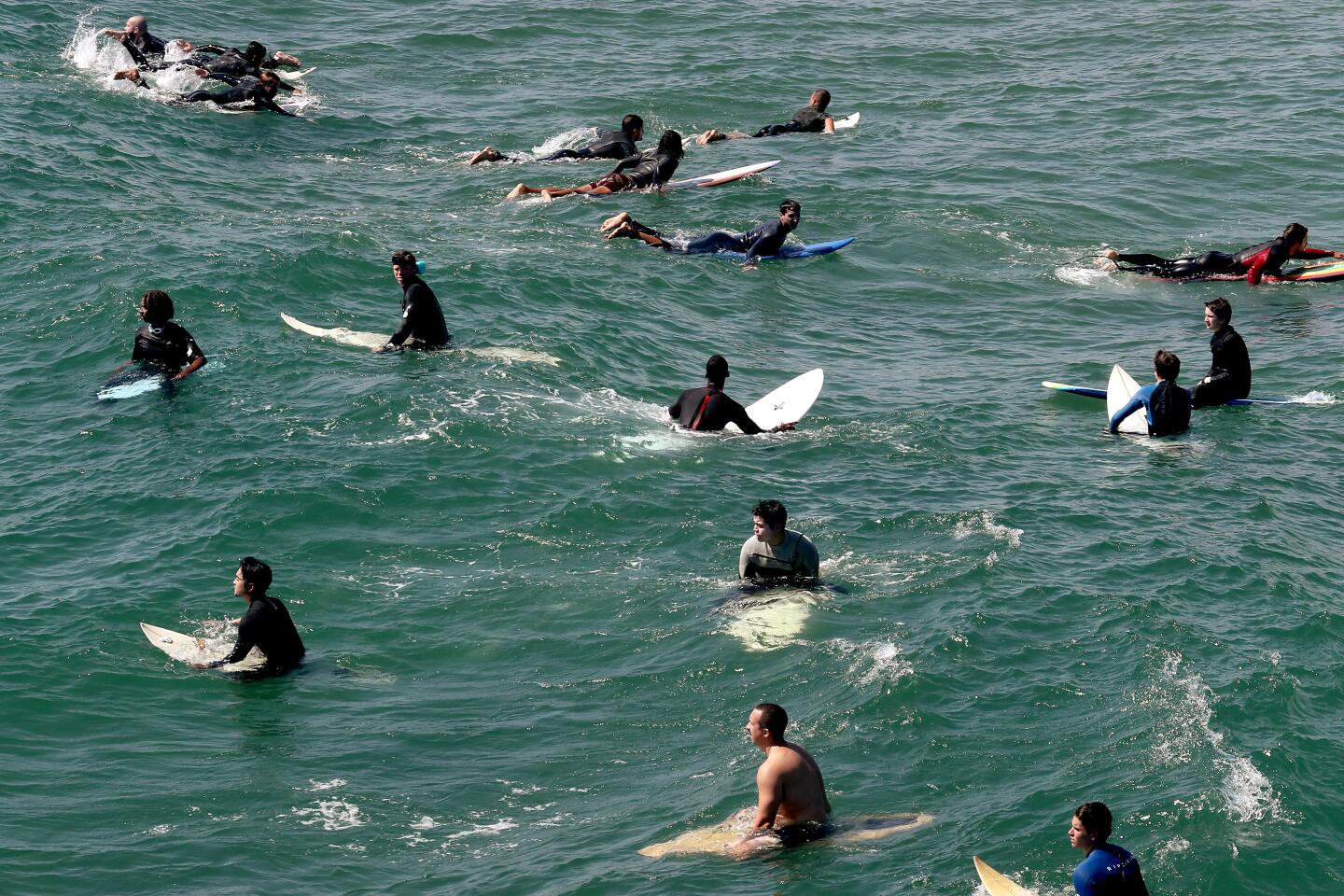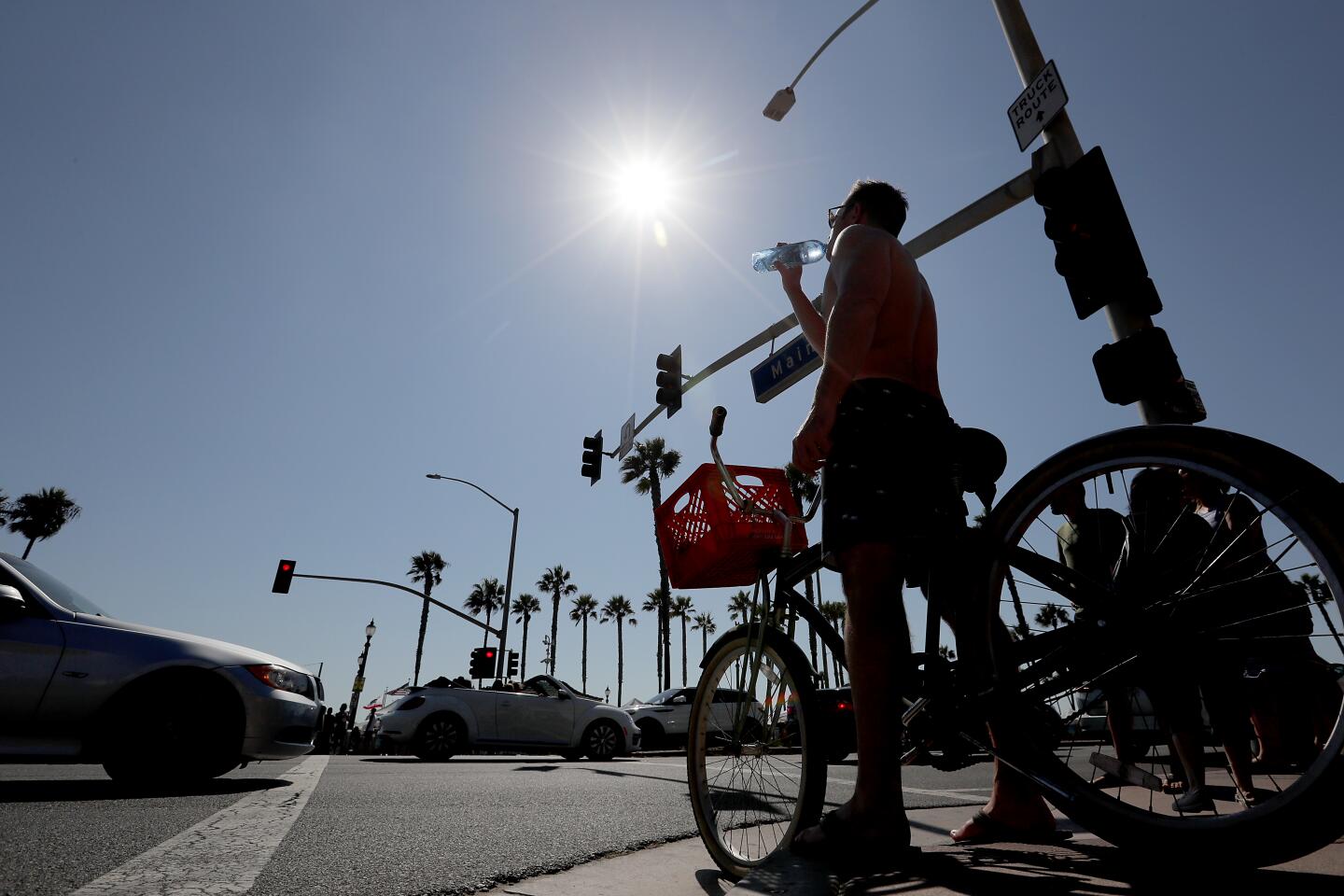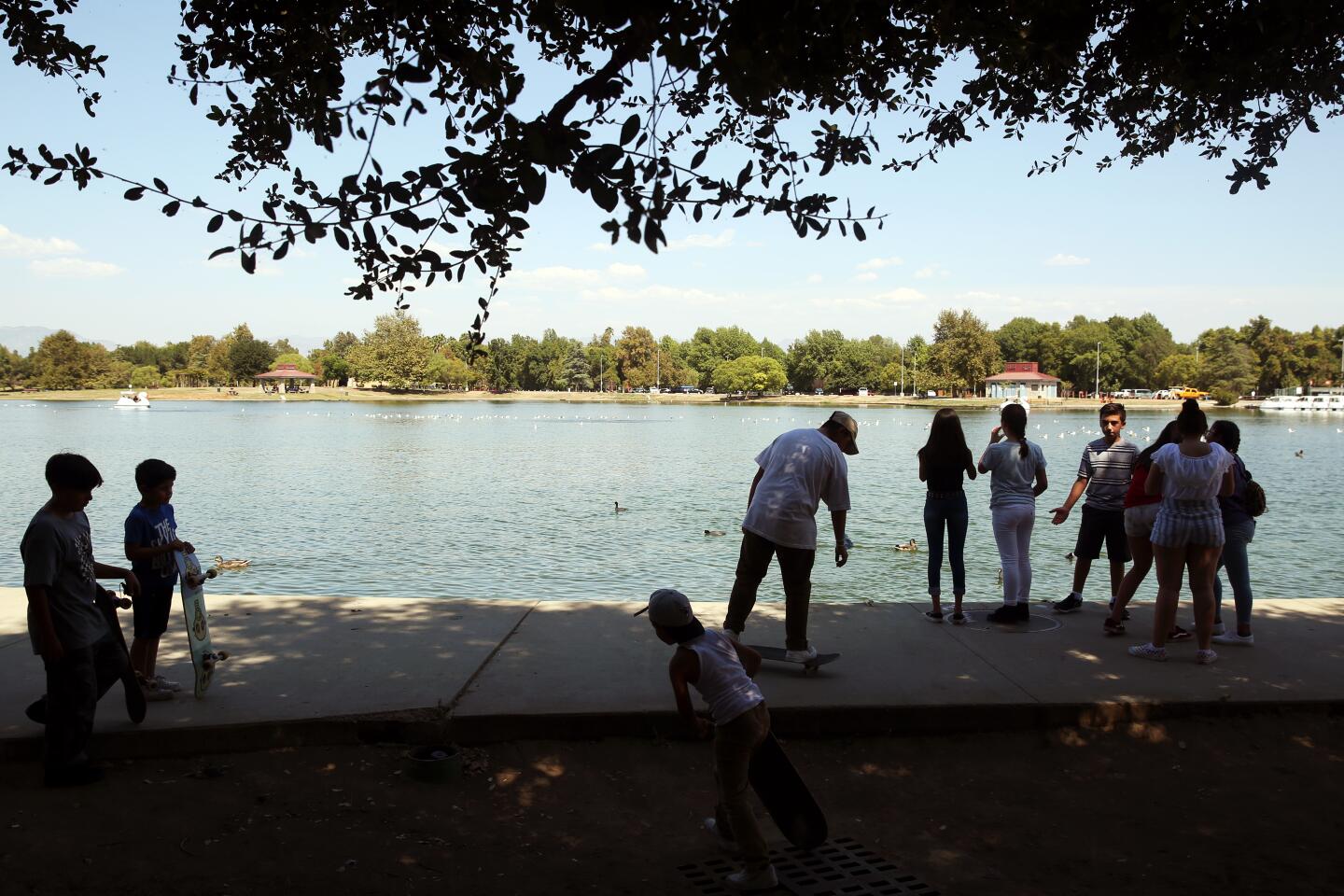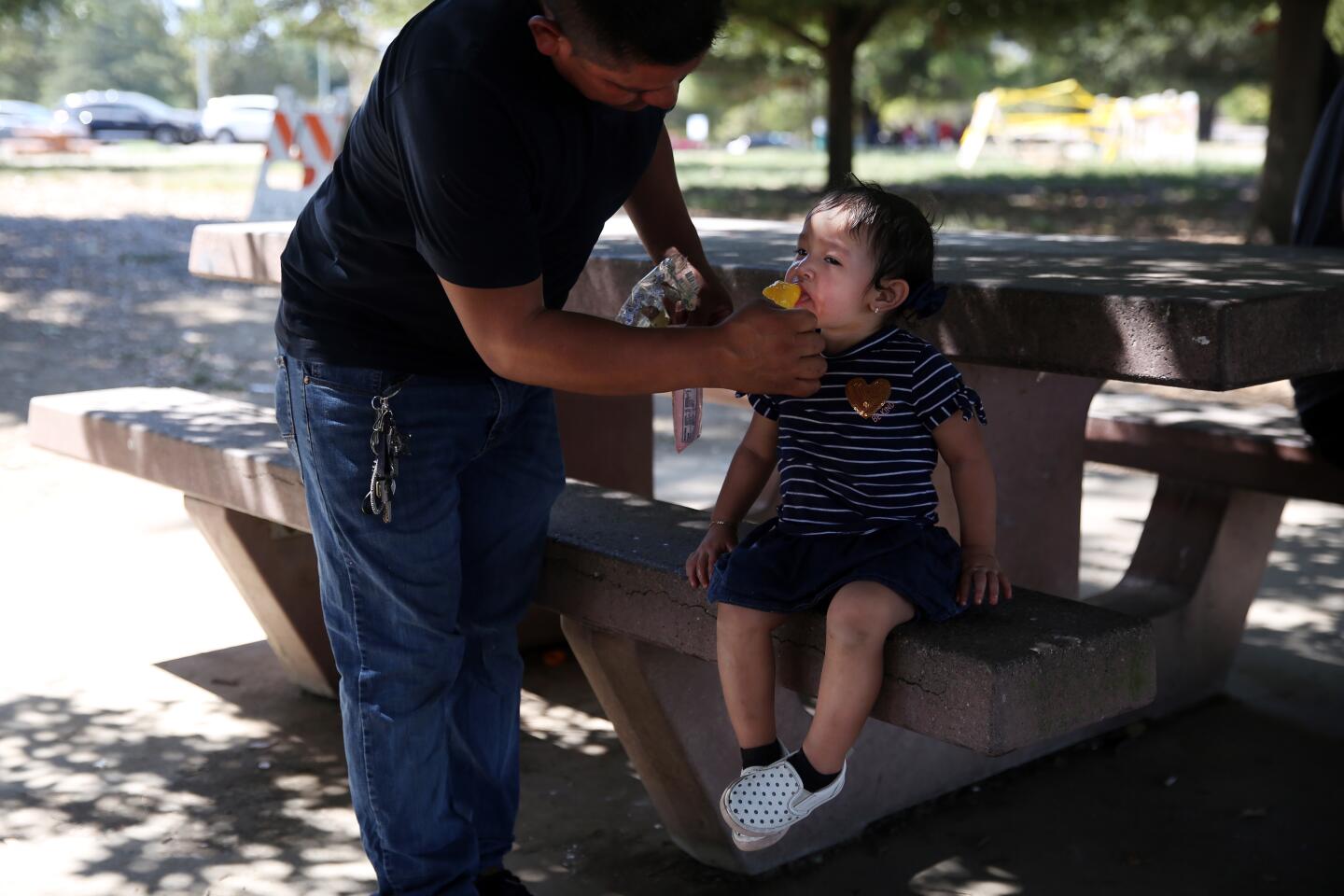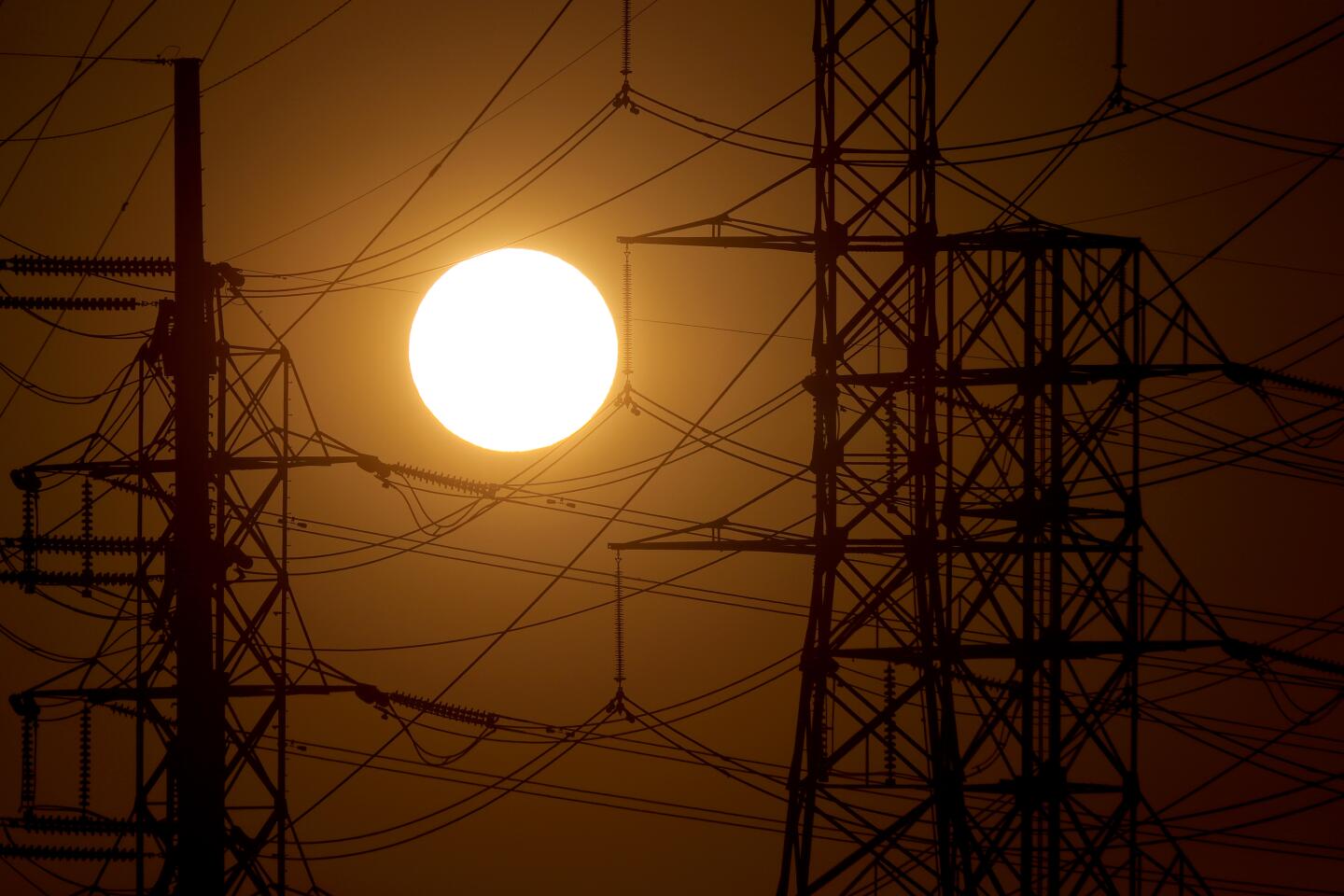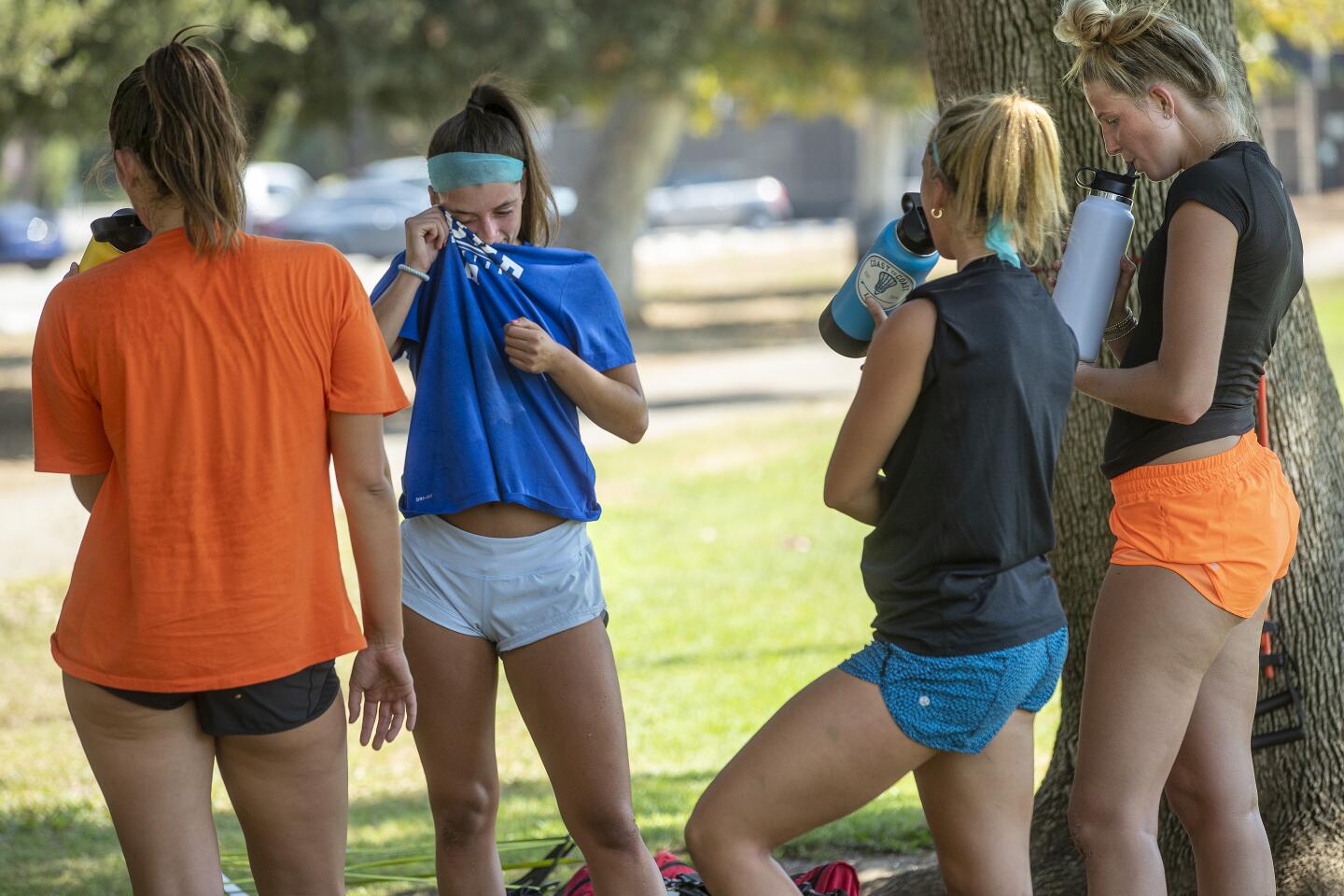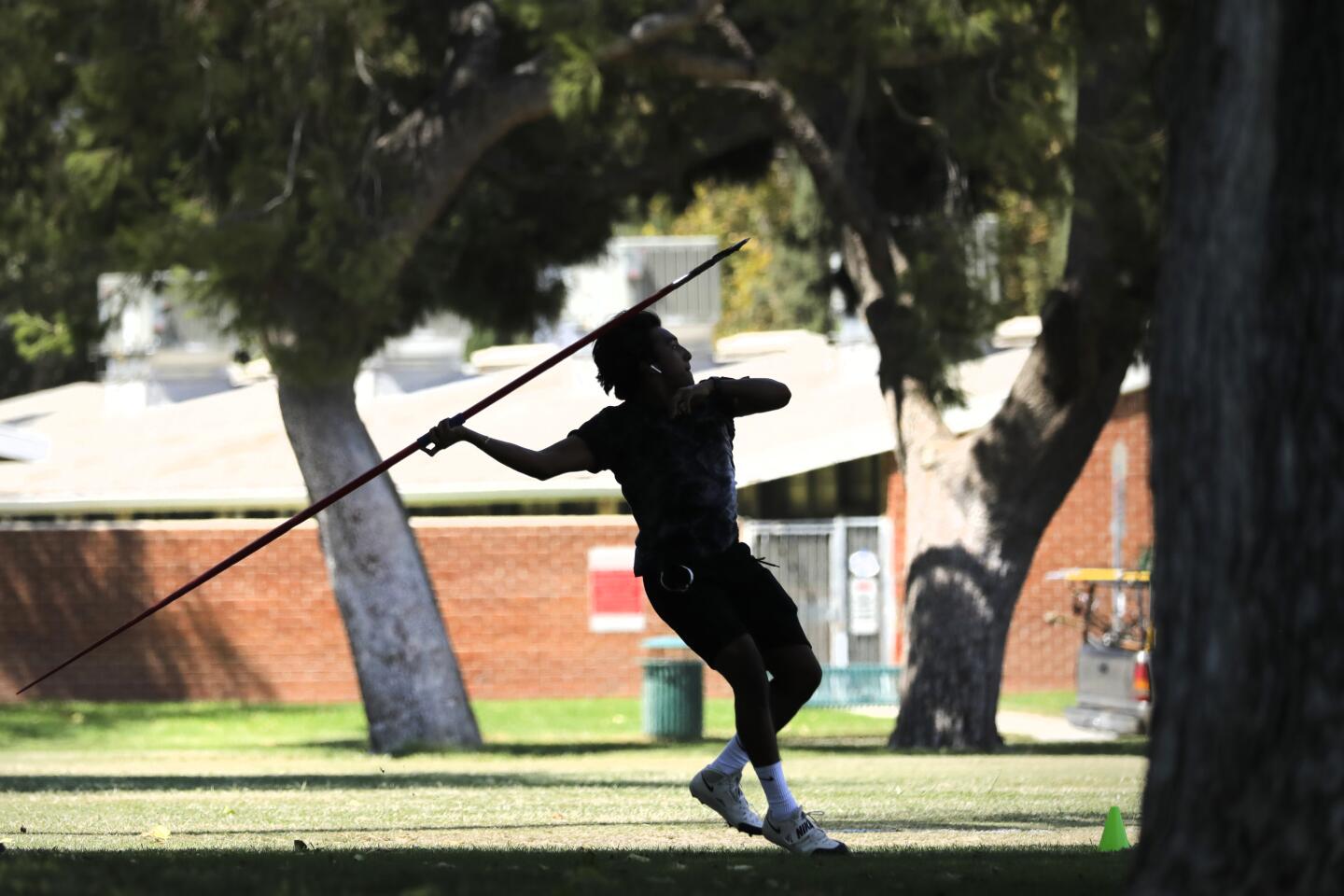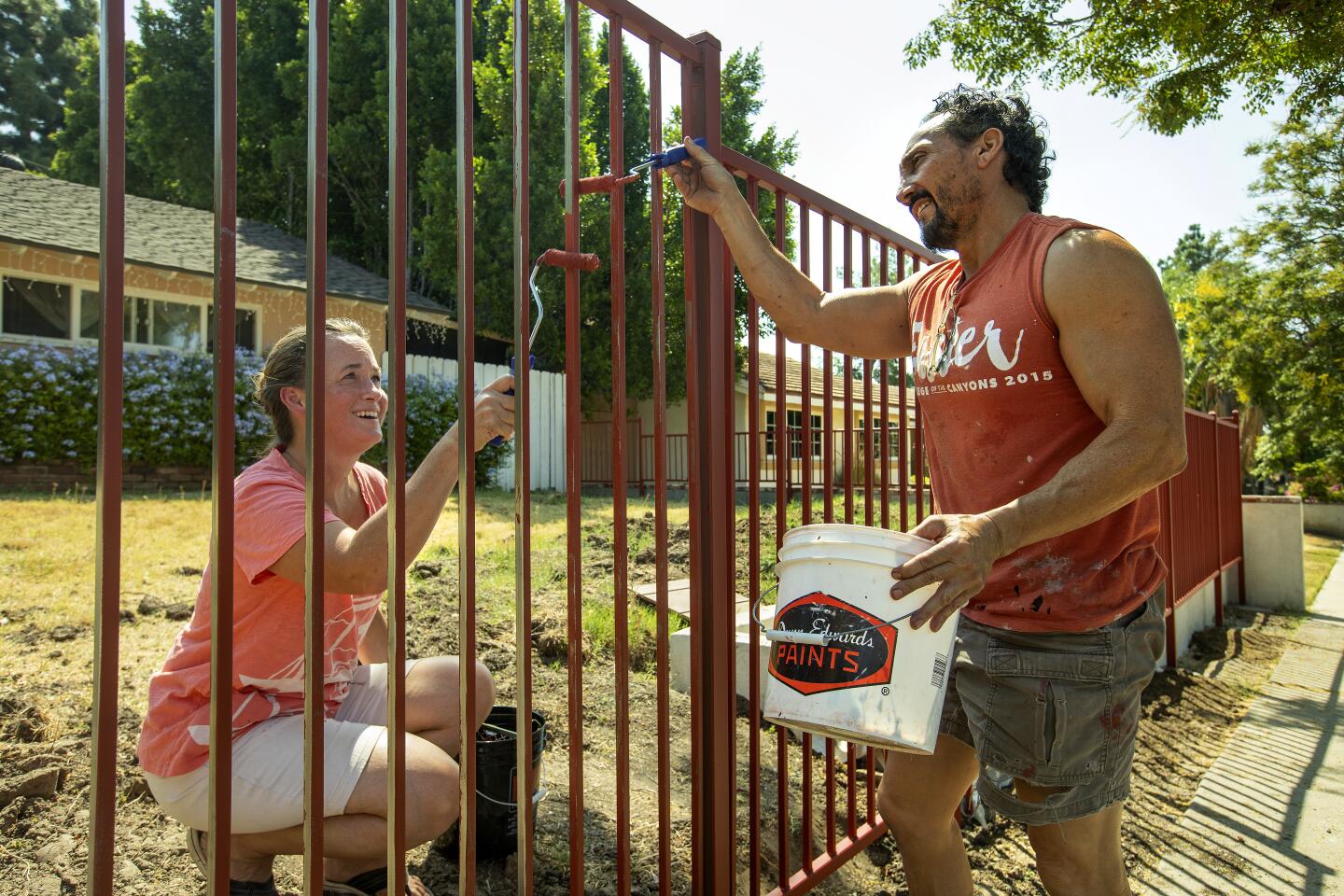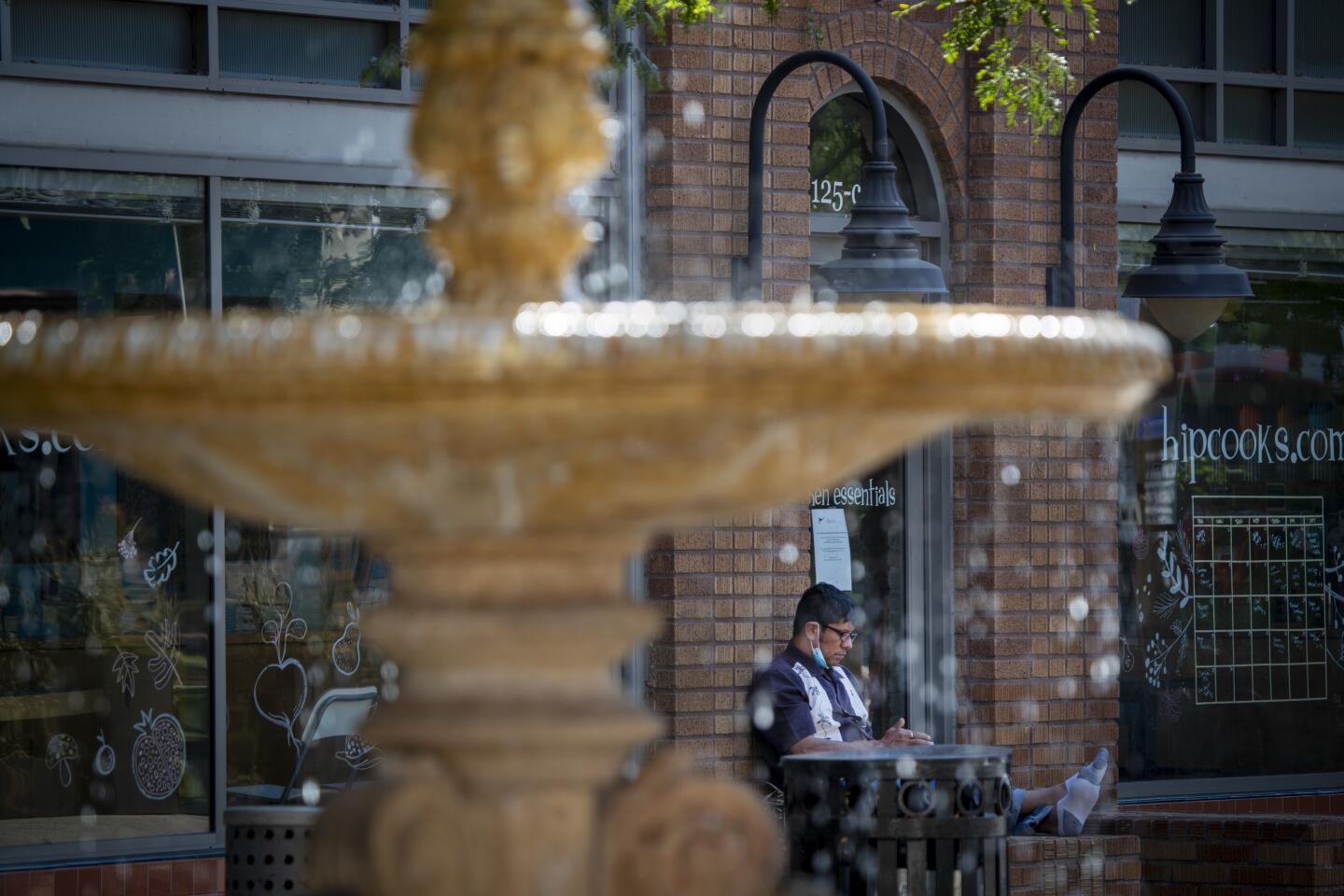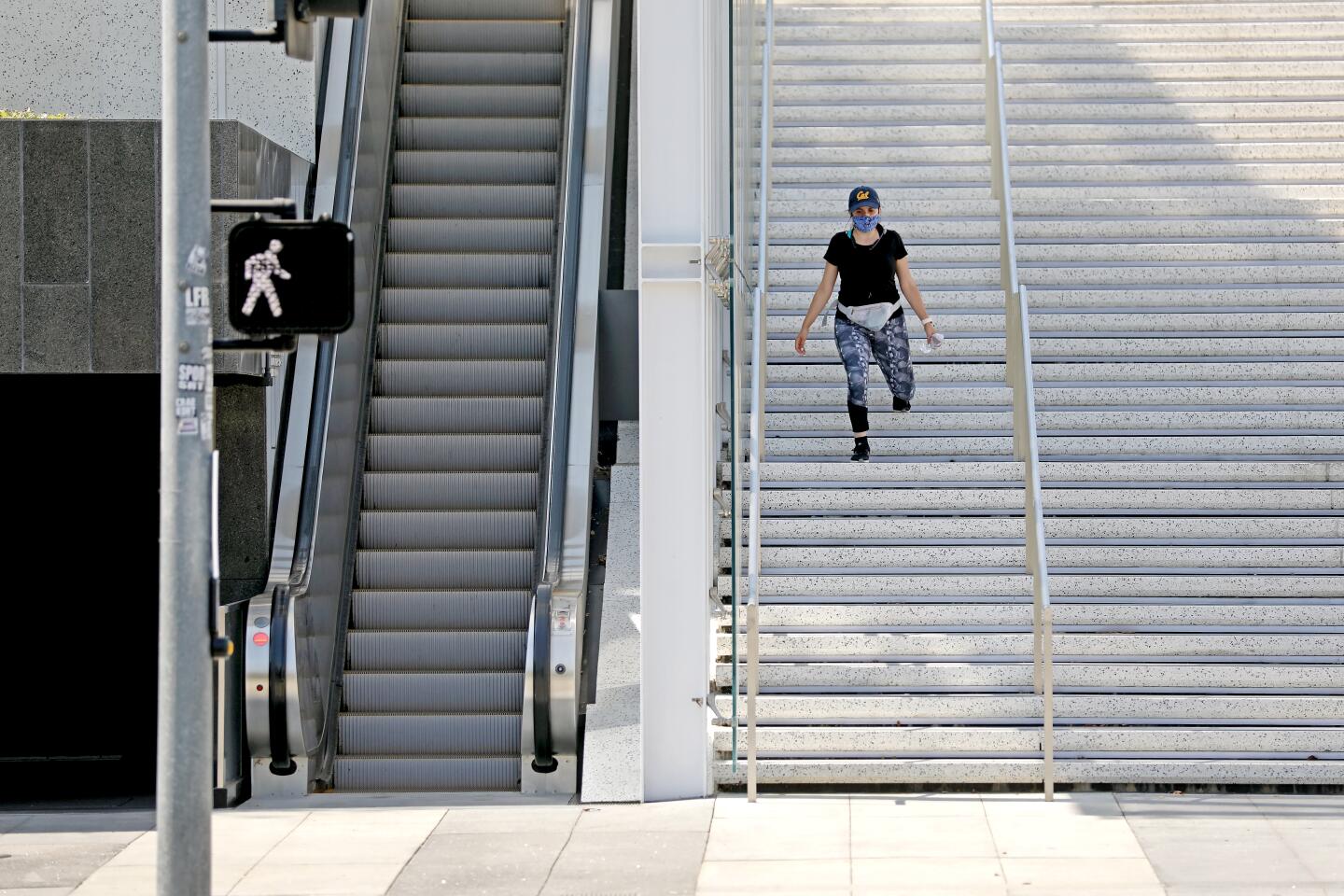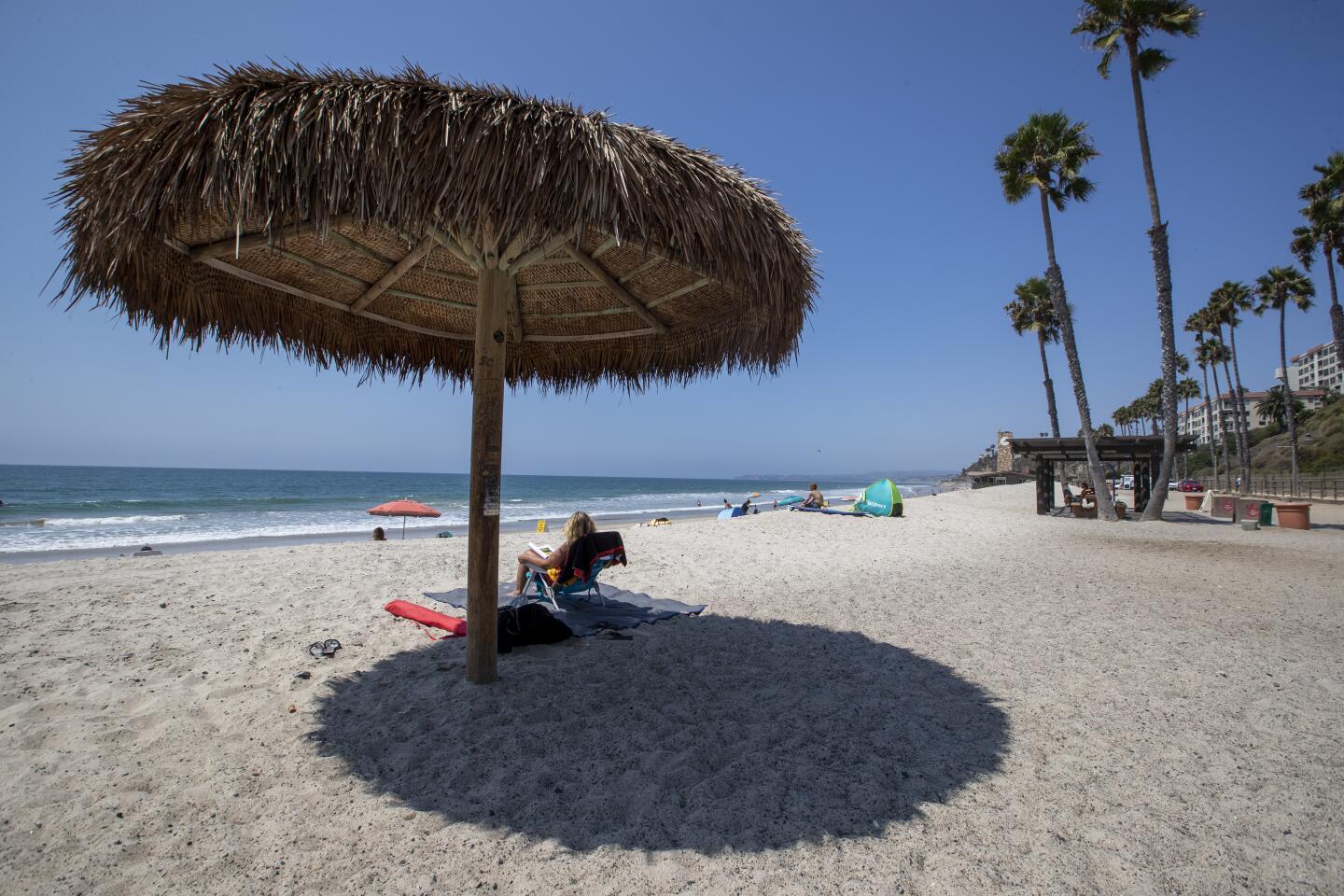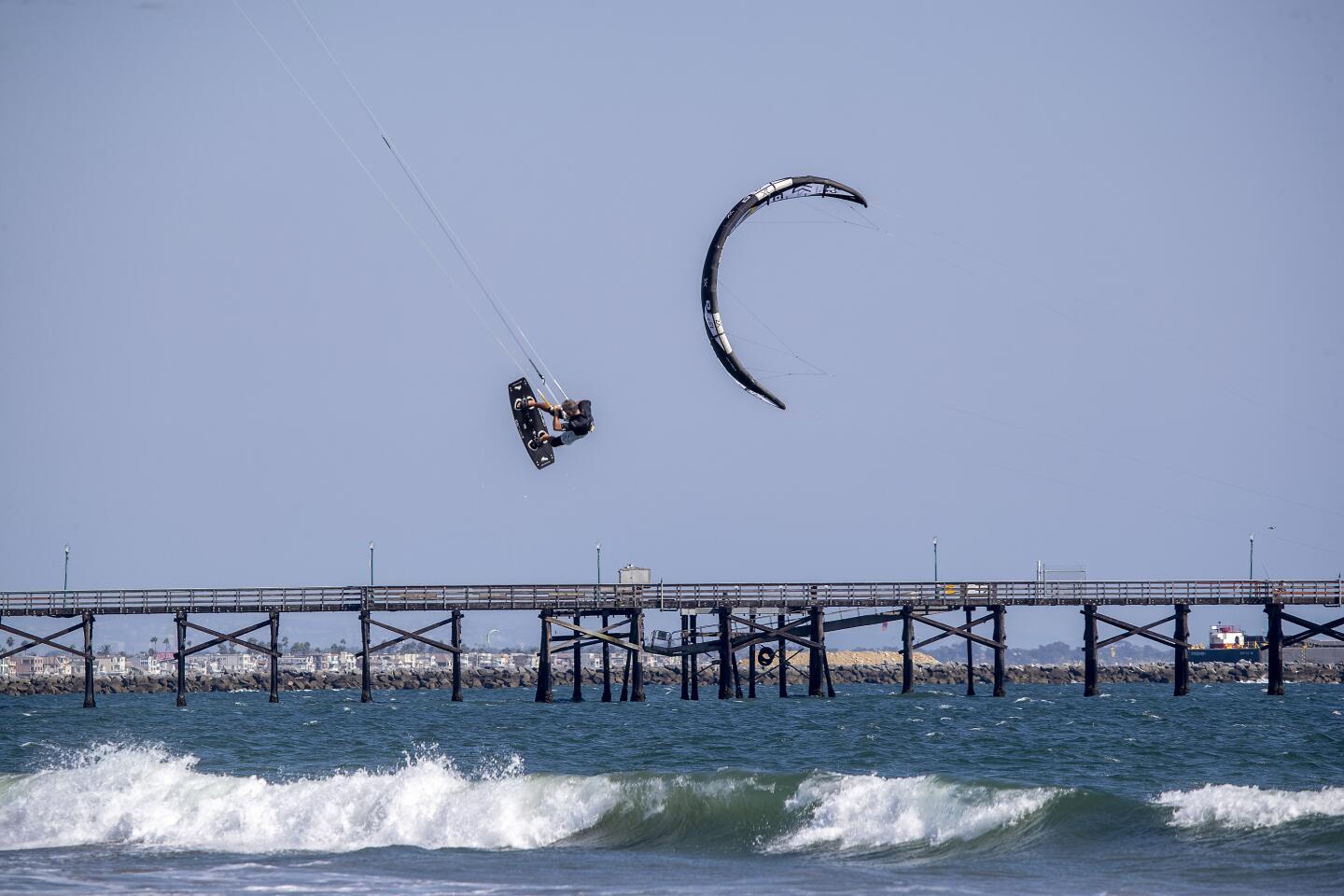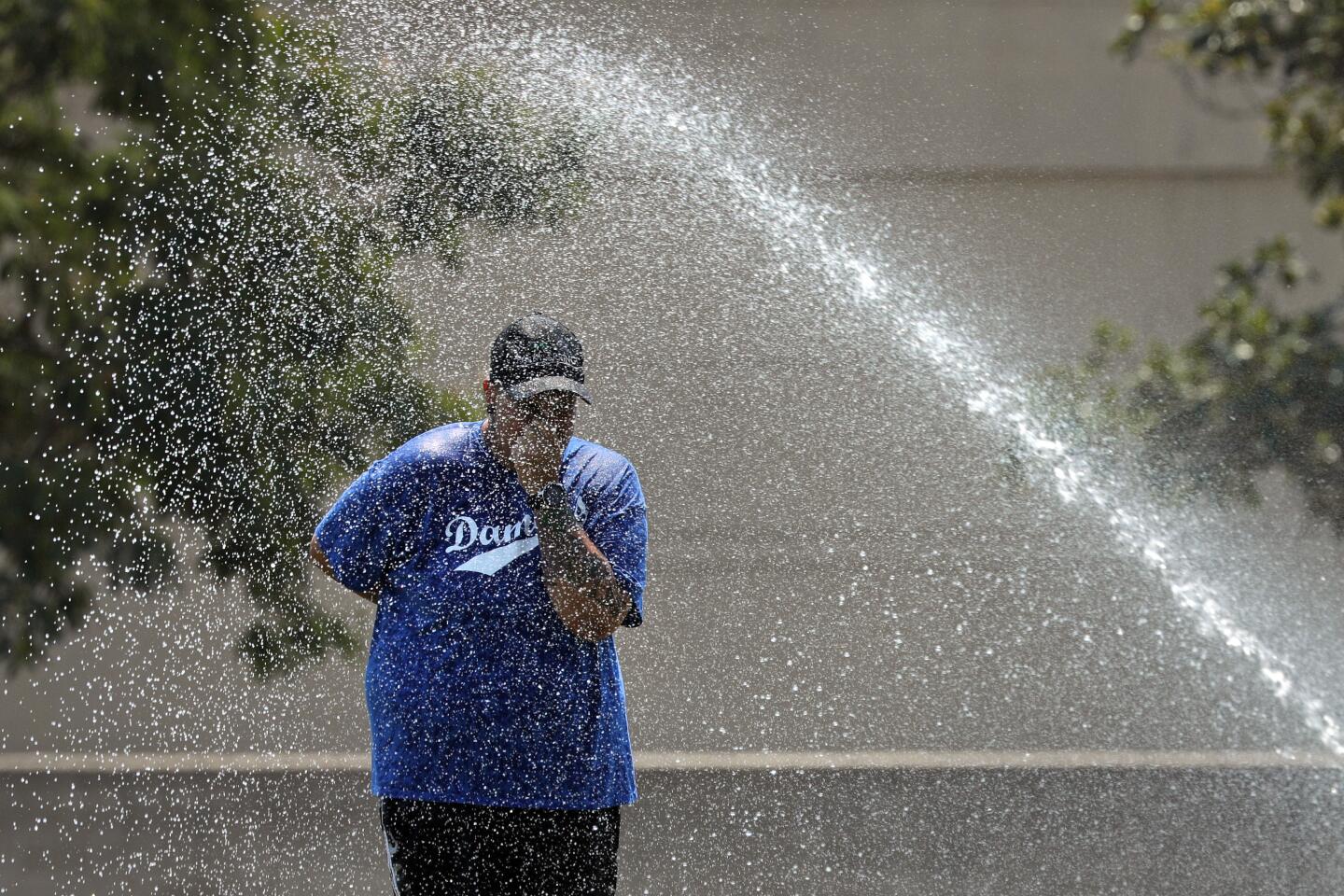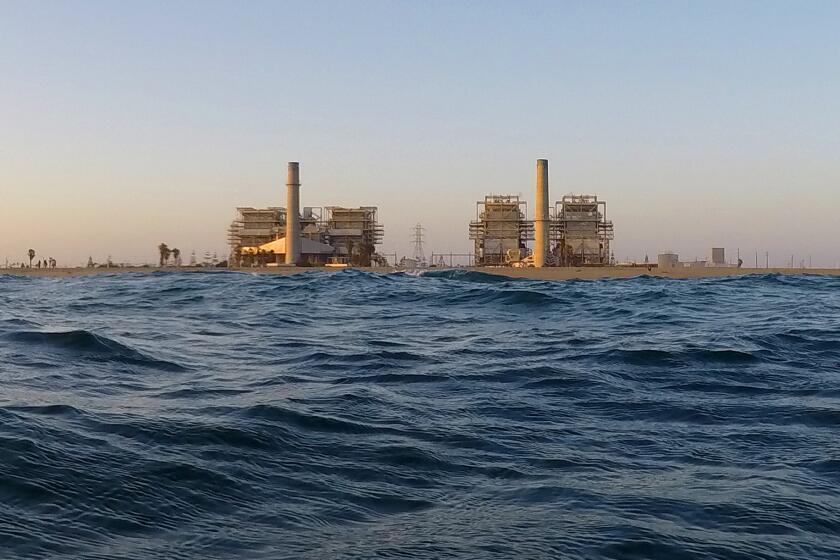State of emergency declared as California faces historic heat, possible power outages

- Share via
With potentially historic temperatures set to sear California through Labor Day weekend, Gov. Gavin Newsom issued an emergency proclamation aimed at shoring up the state’s energy capacity and staving off the kind of power outages and rolling blackouts that left tens of thousands of residents in the dark during the last massive heat wave.
Virtually all of California will be under an excessive heat watch or warning beginning Friday or Saturday and continuing through Sunday or Monday. Forecasters say temperatures are expected to climb 15 to 20 degrees above normal in some areas through the weekend — and warned that records will likely fall.
L.A. County health officials on Friday announced that an extreme heat warning will be in effect through Tuesday for the Antelope and Santa Clarita valleys, as well as the eastern and western San Fernando and San Gabriel valleys.
Newsom’s proclamation is focused on keeping California’s power grid operating at its peak. Specifically, it “permits power plants to generate more power by suspending certain permitting requirements, helping to alleviate the heat-induced demands on the state’s energy grid.”
The governor’s declaration comes as some major utilities warn that the one-two punch of sweltering conditions and increased energy demand could stress the power grid to its limit, potentially resulting in outages.
“For this weekend, conservation is key,” said Jim Hanggi, a spokesman for Southern California Edison.
The California Independent System Operator, which runs the power grid for most of the state, has already issued a statewide flex alert — calling for residents to voluntarily cut back their electricity consumption from 3 p.m. to 9 p.m. Saturday through Monday.
California ISO Vice President of Operations Eric Schmitt told reporters that while the last major heat wave saw rotating power outages hit the state on Aug. 14 and 15, “at this point, we are not forecasting any blackouts.”
“As we get closer and closer to each day, we’ll know better about the accuracy of our forecasts,” he said during a briefing Thursday.
ISO officials cited several factors they hoped would help California avoid rolling blackouts this time around, including the flex alert, a previously issued “restricted maintenance” order requiring that planned routine outages be postponed and coordination with other state agencies “to encourage additional load conservation and make additional generation capacity available for the holiday weekend.”
Temperatures are expected to climb 15 to 20 degrees above normal — and well into triple digits — in some areas of Southern California this weekend.
To help boost capacity at power plants, Newsom’s proclamation temporarily suspends requirements “adopted by local air-quality management districts that restrict the amount of power that a facility may generate, restrict the amount of fuel that a facility may use or impose air-quality requirements that prevent the facility from generating additional power during peak demand hours ... or as otherwise needed to respond to the extreme heat event.”
Additionally, the order states that the California Air Resources Board “shall exercise maximum discretion to permit the use of stationary and portable generators or auxiliary ship engines to reduce the strain on the energy infrastructure and increase energy capacity.”
Given the intensity of the expected heat, though, power outages are possible, utility officials say, and customers need to heed the call to conserve.
If demand is too high for too long, especially when temperatures soar, power transformers could fail, according to Hanggi.
“They kind of work like a radiator in your car,” he said Friday. “So if you have air conditioning running around the clock, those transformers don’t have the opportunity to cool down.”
The situation is “made worse when high nighttime temperatures do not allow for equipment to cool off overnight,” according to the Los Angeles Department of Water and Power.
Both Edison and LADWP said that should outages occur, their crews would work to restore service as quickly and safely as possible.
To reduce stress on the grid, the ISO recommends that residents avoid using major appliances, turn off unnecessary lights, close blinds and drapes and set thermostats to 78 degrees while the flex alert is in effect. Other tips include unplugging devices and appliances when they’re not in use and avoiding cooking and baking.
“These simple steps can go a long way to limiting the strain on our power infrastructure that occurs when sudden and intense heat hits our system,” Martin Adams, LADWP general manager and chief engineer, said in a statement Thursday.
After rolling blackouts, state officials voted to allow four fossil fuel power plants near Los Angeles to keep operating past 2020.
While rolling blackouts were necessary at points during last month’s heat wave, they weren’t as widespread or as lengthy as some had feared — a development officials credited to consumer action.
“When we had the last heat storm, it was the customers taking the steps to conserve that helped to alleviate any additional rotating outages,” Hanggi said. “Conservation and customers taking the steps to watch their energy use are key.”
ISO officials did point to some potential good news: The upcoming heat wave does not appear to be as widespread as the high temperatures that led to the August outages.
About 25% of California’s electricity comes from out-of-state energy imports. But in August, a “heat dome” stubbornly remained over neighboring states, including Washington and Arizona, which held on to their resources instead of transferring them to the Golden State.
“Things can change rapidly,” Schmitt said. “We still do have fires in California at the moment. They move quickly, of course, and that can change the transmission situation. However, we’re looking good for potential transfers into California from the West, and the heat event doesn’t seem to be as broad-sweeping as the mid-August event.”
According to ISO officials, on a normal summer day, the California system handles a total load of 38,000 megawatts.
The demand forecast for Saturday will be 44,237 megawatts, said John Phipps, the ISO’s director of real time operations. It is expected to go to 46,636 megawatts on Sunday and 45,060 on Monday. Those figures are roughly the same as loads seen in mid-August.
While heat waves aren’t uncommon in California at this time of year, climate change has made them a more regular and potent occurrence, according to Bill Patzert, a climatologist and local weather expert.
“Looking back over the past century or so, heat waves in Southern California have gotten longer, they’ve gotten more intense and they’re more frequent,” he said. “And of course, this is a global warming signal.”
With temperatures forecast to reach dangerous levels, residents need to avoid the heat as much as possible, officials say.
They recommend that those who must be outside wear light-colored, lightweight clothing and use a hat or umbrella for shade. Children and pets should never be left in cars, and residents should be mindful of the symptoms of heat-related illnesses, including vomiting, pale and clammy skin and high body temperature.
.
Rob Nikolewski of the San Diego Union-Tribune contributed to this report.
More to Read
Sign up for Essential California
The most important California stories and recommendations in your inbox every morning.
You may occasionally receive promotional content from the Los Angeles Times.

